| General Interest |
|---|
| Where Have 30 Years Gone? |
| How to Get a Job at a Marcom Agency |
| How the StratAmp Team has Made Remote Working Work |
Navigating the Post-Cookie Era in Online Advertising

The digital advertising landscape is undergoing a pivotal transformation with Google’s announcement of the gradual phase-out of third-party cookies, which followed limitations already placed on cookies by Firefox and Safari. This change signifies a broader industry movement towards prioritizing user privacy, which is reshaping and limiting the strategies and tools available for online advertisers.
While this shift presents new challenges, it also opens opportunities for more innovative and privacy-conscious online advertising alternatives.
The Challenges of a Cookie-less World
The decline of tracking cookies is a direct response to growing concerns over user privacy and data protection. The absence of these tracking mechanisms poses significant challenges for online advertisers:
- Less Online User Data – The move away from cookies, while it increases user privacy, reduces advertisers’ ability to access detailed personal browsing data for tracking audience behavior.
- Targeting Difficulties – Without the convenience of cookies, advertisers face hurdles in gathering sufficient online behavioral data to personalize and target their ads for relevant audiences.
- Strategic Pivot – There is a pressing need for advertisers to develop new, privacy-compliant targeting strategies that do not rely on the traditional third-party cookie-based approach.
The Opportunity: Social Targeted Programmatic Advertising
In response to the changing landscape, Social Targeted Programmatic Advertising emerges as a better alternative. But first … this is NOT ads placed on social media sites. This approach leverages sophisticated AI algorithms to analyze actions and interactions – comments, likes, shares, follows, audience profiles, etc. – acquired from LinkedIn, X/Twitter, YouTube and Reddit:
Social Posts – Text analysis of users’ social conversations
Audio – What people say and listen to on podcasts, videos, radio, etc.
Video – Content of videos that viewers like, share and watch
Images – Content of images people post, share and like
Competitors – Followers of competitors’ social media accounts, and/or mentions of competitors
LinkedIn Profiles – Company, industry and skills of prospective audiences

Plus, ads for your audiences can be geo-targeted to any location – countries, cities, conference centres, office buildings, etc., around the world.
Again, this is not about ads delivered on those social media platforms. Rather, it is a sophisticated means of leveraging the plethora of information about the interests, behaviors and preferences of social media users. When a prospect is identified, a unique methodology assigns an ID that incorporates the user’s device ID, enabling closely-targeted ads to be delivered to the user wherever their online habits take them — on websites they visit or web apps they use.
Since users freely share their information and activity on social media sites, there are no concerns for privacy or security of data.
Advantages Over Cookie-Based Advertising
Shifting to Social Targeted Programmatic Advertising delivers both strategic and tactical advantages over traditional cookie-based online advertising:
- Rich Data = Effective Targeting – Social platforms offer a treasure trove of zero-party user data, ranging from content interactions and insights to profile information. The result … a more rounded and effective targeting strategy based on real users’ online interactions.
- Custom Audience Creation – Advertisers can create custom audiences using the rich data available from social platforms, driven by your unique advertising needs and interests.
- Pinpoint Audience Targeting – Unlike cookies, this approach enables highly-relevant contextual targeting, and can track user identities seamlessly across different devices with laser precision.
- Cost-effectiveness – Since Social Targeted ads are delivered only to highly relevant audiences, budgets can be leveraged to reach more prospects in more markets.
- Increased ROI and Sales – Social Targeting fosters deeper engagement with audiences for better targeting and higher likelihood of delivering on sales goals.
- User Consent – Social Targeting respects user privacy by relying on consent-based data collection, in alignment with today’s privacy standards.
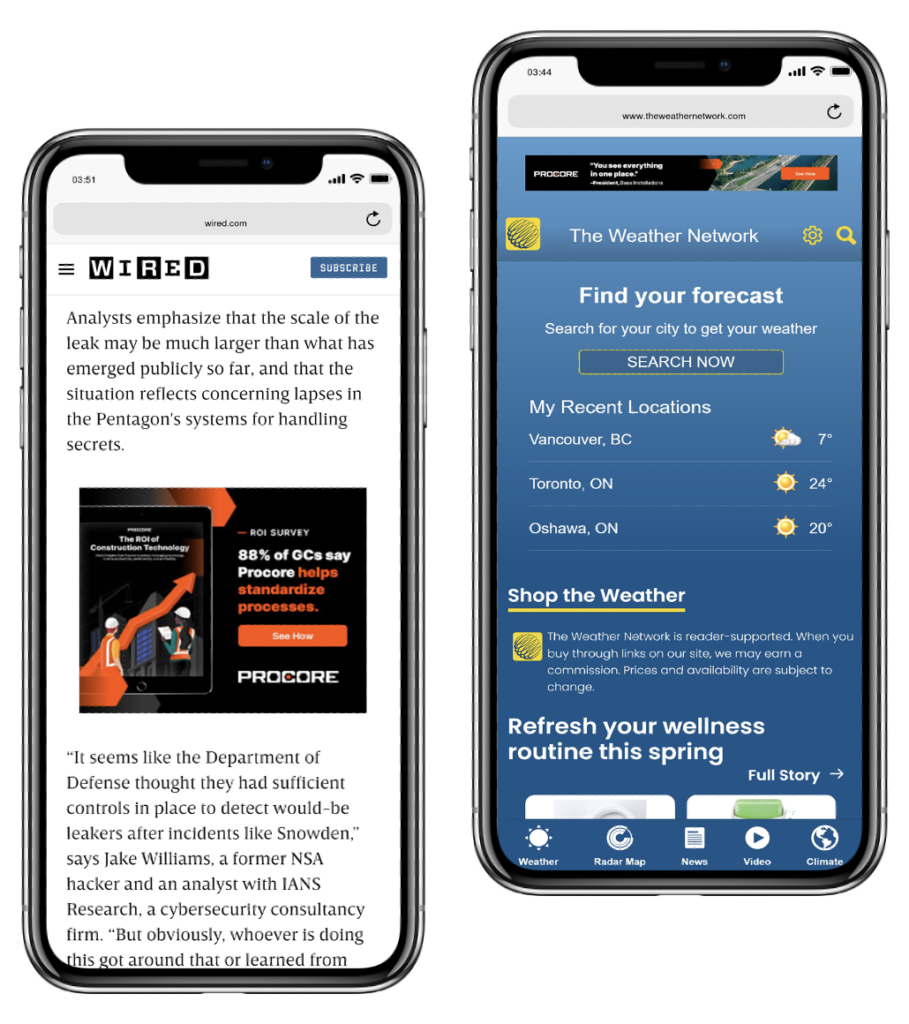
The Demise of Cookies Need Not Be Daunting
As we step into a new era of online advertising, the end of cookie-based methods presents an opportunity for innovation and growth. Social Targeted Programmatic Advertising stands out as a compelling, highly effective solution for advertisers seeking to navigate this transition successfully. It offers a uniquely effective pathway to achieving advertising goals while respecting user privacy and adapting to the changing digital landscape.
Learn how other companies are enjoying the benefits of Social Targeted Programmatic Advertising, without the need for cookies:
View Some Informative Case Studies
For a more in-depth look at how Social Targeted Programmatic Advertising can support your unique needs and strategies, please contact gayle@stratamp.com.
From Lead to Close: Why Every Company Needs to Use Sales Playbooks

Though sales and marketing have distinct functions, they are closely inter-connected in business (a complementary pairing … wine and cheese anyone?). Ultimately, marketing exists to support sales. So marketers are constantly thinking of strategic ways to support key business objectives through external activities designed to drive demand and generate leads for sales engagement.
But let’s stop there for a moment. Once marketing has done its job and leads are in the hands of sales, what happens? Do the sales folks have concise yet in-depth knowledge to give them the best chance to close on the prospects marketing delivers?
For sales organizations there can be any number of issues, challenges and questions impacting their ability to close a sale. They can include, for example, inability to properly qualify and probe customers and prospects, uncertainty when faced with handling customer objections, or even lack of product or solution depth of knowledge. Regardless of the number of leads marketing may deliver, it is important to give sales the best chance to close on them, and avoid giving competitors an advantage.
In this context, sales enablement should be considered as important as demand generation. A great way to support the process is a Sales Playbook – an effective resource to prime the sales force for optimal performance and ability to capitalize on all opportunities. Done correctly, it is a powerful all-in-one reference guide (typically a clickable PDF or web page with content tabs) that is an essential tool for the organization’s sales force.
Let’s take a look at some common elements of a Sales Playbook:
At-a-Glance – Sets the playing field with an overview of background trends and issues; the opportunities that exist; key challenges or business issues faced by customers and prospects; and how sales can pitch the benefits of their product/solution to solve customer challenges and close more sales.
Product Overview – Defines key purpose/value, features and functionality, services associated with the product (e.g. post-sales support, training and education), new features planned for the coming months, etc.
Value Proposition – Equips sales with compelling arguments to convince prospects to buy from them. Includes key differentiators, competitive advantage, and the overall value proposition.
Sales Opportunity – Provides clear reasons/rationale customers will be interested in buying including concise product/solution positioning, detailed customer challenges and pain points, clear product/solution benefit statements addressing the challenges, and specific sales opportunities to help identify target accounts.
Prospecting Guide – Steps to create the best opportunities for moving prospects through the process leading to a sale. Includes tips to qualify and probe so questions can be focused on determining the prospect’s key challenge or needs.
Competitive Landscape – Summarizes key competitor market positioning, outlining each of their offerings in detail to help the sales force better understand likely questions they will face, and suggestions for how to frame their sales presentation.
Handling Objections – Overviews common objections such as features, price, integrations, current contracts or budget considerations, and how to respond to them, including common prospect questions and recommended answers.
Promotions/Special Offers – Outlines promotional offers that are available to make it easier for customers to help sales move the process forward and convince prospects to invest in the product/solution.
Resources – Helpful reference materials to deepen sales reps’ knowledge such as relevant third-party content, customer case studies, usage guides, training tools, etc.
The true value of a Sales Playbook is that all key selling information is presented in a single-source, easy-to-use guide that elevates performance of the sales force, leading to more sales.
StrategicAmpersand has produced many such Sales Playbooks for our clients, and seen the great results. In that way, we serve as a key external member of our clients’ marketing/sales organizations. If you’d like to talk or see some samples, please contact lisa@stratamp.com.
Design Matters?
By Illya Noble, Senior Art Director
As a veteran graphic designer and art director with over 30 years of experience, sometimes you start to ask yourself if what you do for a career really makes a difference in anybody’s life? Of course, it’s a way to make a living and support your family and do the things that interest you. But really, does it matter?
And this happened.
A friend and I were attending a music concert and while grabbing some refreshments and heading to our seats before the show started, I heard someone calling my name. I turned to see who it was and I recognized the face from my distant past. It was the widowed wife of an old high school buddy who tragically died from cancer at the age of 38. He left behind two daughters as well who are now grown up and have their own families.
This old friend gave me one of my first design projects after we both graduated college, 36 years ago. He needed a logo for his new landscaping business. The company name was Mike Davis Landscaping. The following is a rough sketch from my recollection of the logo as I have no digital record of it. I gave my friend the master artboard, because that’s the way we did things back then. The final artwork was created using a rapido-graph ink pen on a cold-press artboard. Times sure have changed!

My old pal Mike was very appreciative of the design and it was his company identity for his business until he passed away. It was on all his trucks, ads, corporate identity, shirts, etc.
Catching up with his widow at the show, one of the last things she said to me was about the logo, that brought a tear to my eye. Mike’s daughters knew how much pride their Dad had in his company, his people and the work they did and the logo was always a positive symbol for him. In memoriam of their dad, they both had tattoos of the logo on their arms.
Maybe design matters just a little bit.
Improve Results from Your Events with Targeted Digital Advertising

Industry events are an important tool for marketers due to their ability to deliver targeted audiences and provide valuable opportunities for engagement. Whether you’re staging an event, participating in a third-party event as a speaker and/or exhibitor, or even just attending an event, it’s usually a significant investment and companies must make every effort to maximize its ROI.
Post-pandemic, live and hybrid events are once again drawing significant audiences. From a communications perspective, it is important to consider what you will do before, during and after the event to attract and engage attendees.
This is where a carefully planned and executed digital strategy can have a major impact on your event KPIs. For example, programmatic and social targeted programmatic advertising are highly effective in generating awareness, engagement and actionable leads. This automated form of online advertising enables us to identify and reach audiences in real-time, wherever they are, to deliver desired messages and calls-to-action (CTAs), all while measuring response and optimizing audience reach.
Now let’s think about how we can use this compelling form of advertising when it comes to live- and hybrid-event communications:
- Leading up to the event, give people compelling information about what they’ll learn and the insights they’ll gain.
- During the event, drive visitors to your booth, generate attendance at keynotes and information sessions, and even cross-promote valuable content.
- After the event, share event presentations and continue to amplify content to nurture audiences you reached at the event.
Sounds great, but how?
Programmatic offers a broad yet targeted approach. Audiences are identified through browsing behaviours (keywords), location, and through first- and third-party data. Unique to programmatic is the ability to re-target audiences who have clicked on an ad, so you can continue to reach event attendees after it concludes, for maximum frequency and engagement.
Social targeted programmatic relies on audiences to self-identify, based on their expression of intents and interests on various social media. The platform uses artificial intelligence (AI) to establish define and reach target audiences based on analysis of their social media activity. This can include comments and content people post; pics and videos they interact with; your competitors they follow or comment upon; and content of their LinkedIn profiles, including company, industry and skills.
Key to getting the most out of both these media goes back to having a carefully planned and executed campaign strategy. Here are some key considerations:
Campaign Objectives – Ensure your campaign objectives are clear and measurable; establish KPIs at the outset to drive an effective overall approach.
Targeting Alternatives – Leverage the most appropriate media — programmatic, social targeted programmatic, or both. While there is some overlap in how they define and reach audiences, good media planning will maximize results.
Creative Strategy – As mentioned, event targeting delivers an important yet niche audience, and provides a great opportunity to align content, messages and CTAs to the event agenda. For example, banner ads can promote event attendance before the show; then during the show they can be used to drive attendees to a booth or session; and after the event, promote valuable content such as a third-party report, case study or blog.
The ads you deliver can be split-tested and optimized according to results, so the better performing ad is shown more often, to maximize results.
Impression Delivery – Budget and Timing – This is variable and unique to each campaign depending on objectives and strategy. We often recommend a controlled test campaign for the first event, followed by an analysis and broader roll-out that leverages key learnings.
Campaign KPIs – Measurements can include impressions, clicks, click-through-rate (CTR), cost-per-click (CPC), content downloads (gated vs. ungated), page hits, page depth, overall spikes in website traffic during the ad campaign, conversions, and more. It is important to establish the campaign KPIs at the outset to ensure the campaign parameters are set up correctly for reporting purposes.
CASE STUDY: SUSE connects with audiences at SAP Sapphire 2023
SUSE, a German-based multinational open-source software company used social targeted programmatic to promote their participation at the SAP Sapphire 2023 event, and drive traffic to the SUSE booth. The targeting strategy leveraged tactics both before and during the event.
Two weeks prior, audiences within specific geographic markets were targeted based on their LinkedIn work profiles, social media conversations and engagement, text analysis of keywords, and those following competitive accounts and/or talking about competitors. Once the audience was identified, ads were served to identified targets within 40 minutes of qualification. The ads promoted SUSE’s participation at the event, and also drove to a relevant third-party report.
Pre Show Banner Ad:

Show Duration Banner Ad:

At the show, only attendees at the event venue and nearby hotels were targeted with messaging driving them to the SUSE booth and to key sessions.
This result … above-average click-through rates, an increase in content downloads (for the particular report) and higher levels of activity at the event. Pre-show, the campaign delivered 361, 859 impressions, 4,604 clicks and a CTR of 1.27%. At the show, 139, 209 impressions were delivered, generating 1,778 clicks and a 1.28% CTR.
If you’d like a no-obligation consultation, or to receive a free customized proposal for a campaign to support an upcoming event, please contact me – Lisa@stratamp.com.
Yes, Customer Case Studies are Still Valuable in PR
By Cindy Watson, Director of Public Relations

Journalists’ time is always precious, but in a world where media outlets are consolidating and often operating with limited staff, public relations professionals need to be even more thoughtful about the material we’re creating and pitching, ensuring we’re offering relevant and useful content.
With decades of pitching experience on our team (and personally, as a former journalist who was once on the receiving end of pitches), we’ve found one of the most valuable things an organization can do to pique media interest is to leverage compelling, educational and validating customer case studies.
A customer case study is typically a short overview of a business problem; the solution they chose to address it (including how and why that particular solution was selected); and the resulting outcomes. Whether in a structured format/template, or simply outlined as a media pitch, here’s why customers’ experiences are so valuable, how we successfully leverage customer case studies and why they should be a priority when it comes to your PR strategy.
The customer advantage
It’s important to understand why editors are interested in this sort of content. Here’s what makes customers’ stories so valuable:
- Readers can identify with customers, because many of them are facing the same business issues.
- Customer examples allow organizations to tell a much fuller story about their offerings and the outcomes their customers realize, than just listing a couple of bullets with benefits, like you might have in a brochure or press release.
- In my previous life as a tech journalist, it was actually a requirement that every story our editorial team filed included at least one customer. While a company can tout the benefits of its products and solutions all day, their information and opinions are not considered impartial. A journalist’s job is to report the facts, so offering a user who can share their experiences means the writer is getting a third-party source and unbiased insight into the topic illustrating how a solution works.
Putting the pieces together
While telling a customer’s story might sound easy enough to do, our team has learned over the years there are a few considerations to keep in mind.
Firstly, simply identifying a customer is not enough. The customer needs to be qualified to ensure they’re an appropriate choice before any other steps are taken. We like to touch base with the customer’s account manager to get the background first, and then have a conversation with the customer before any writing or pitching begins to explain the process and requirements and to confirm a few things:
Is the company willing to have a case study written about them and do they have buy-in and approvals from their internal communications (and in some cases legal) teams for a case study and/or subsequent media activities? Sometimes case studies and pitching get stopped dead in their tracks because of a lack of internal approvals, so this needs to be confirmed from the outset. Having the go-ahead from an IT person or the contact who paid for the solution is not enough; the marketing, communications and legal teams often need to be involved in the conversation.
Sometimes customers might be willing to take part in a case study but are unable to participate in media interviews for various reasons. In those situations, we identify ways to pitch the case study and secure an article in the press without a customer interview. For example, see this full feature story on a successful implementation in a Canadian city where the case study was used by the editor. It can be done, but careful considerations with customer’s buy-in and the right media outlet are crucial.
What’s the experience they have to tell? Will it be something that will be interesting to the media and the outlet’s readers? We want to ensure we’re highlighting a solution that is a priority for our client, and that the customer had a smooth and successful implementation. There should be clear, quantifiable results, so ideally we like to capture the story six months after the implementation (or more). When speaking with the customer to gather information, we are watching for how they might perform in a media interview setting as well.
Even if a story isn’t ideal for media, it might still be valuable for our client to develop a case study for their website to leverage for marketing purposes and promote through social media.
Adapting for the best results
It’s important to note not all customers are the same and they have varying levels of comfort. Like the example I gave earlier, maybe they don’t want to participate in interviews but are happy to have the case study pitched. Perhaps they don’t have the time to do an interview with us but there are other materials available for us to use.
Recently we worked on amplifying the news about a smart water metering solution implementation at a townhome complex in Ontario. The customer wasn’t available but we developed a press release and pitch outlining the details. This landed us a media interview, and our client was able to provide the journalist with an extensive overview of the implementation and industry practice. As soon as the press release and media coverage went live, our client started to get inquiries from prospects.
There are other customers who are very enthusiastic about sharing their positive experiences. In one situation, a customer took part in a webinar with our client, which we attended. Post-event, they were willing to share their experience with the media. We sprang into action and put on our journalist’s hat. We pitched and secured a contributed article with an outlet and wrote the piece based on learnings from the webinar. This article is an example of what is possible. The customer did not have to do anything beyond approving the article before it was published.
We’ll often come up with options for leveraging a successful customer implementation, keeping the customer’s comfort level and availability in mind.
There are many ways to convey a customer’s experience and successes – from a formal case study, to a media pitch highlighting their results. Not every customer is an ideal subject, but finding one with a good story will give the PR team highly relevant and interesting angles to pitch to editors, resulting in a credible way to connect with your potential customers.
Related stories:
Customer Spotlight: Procore & Bass Installation
what3words: Raising Awareness of a Life-Saving Navigation App
Trilliant Partners With the City of Cowansville
City of Calgary + Waze data-sharing partnership
Generate Leads with Social Targeted Programmatic

Target prospects based on their interests, intents and profiles expressed on social media
Programmatic advertising makes it possible for B-to-B marketers to reach audiences based on keywords searched, physical location, competitor interest and more. Delivering ads to these acquired audiences is very effective for generating awareness, interest and engagement.
But programmatic has evolved to become even more effective at reaching highly-defined audiences. Now there’s an approach to targeting audiences based on the ways people are acting and interacting on their social media – the comments and content they post, the images and videos they view and share, the places they visit, and more.
Social targeting raises programmatic to a new level
This kind of social targeted programmatic advertising is a direct indication of the intents and interests people express on social media. For B-to-B marketers, audiences are acquired from Twitter, Reddit and YouTube. And now … audiences can also be acquired based on their LinkedIn posts and user profiles!
But make no mistake … this is NOT a form of advertising on social media sites. Audiences are ‘acquired’ on those social media, then advertising is delivered through traditional programmatic channels – websites people visit or apps they use, most often on their mobile devices.
Here’s how social targeting works …
Audiences are identified using an artificially intelligent mobile ad platform that analyzes social media activity to establish targeted audiences, then serve them contextually relevant ads in virtual real-time. The audiences come from the following sources (with full respect for privacy regulations in all cases):
LinkedIn Profiles – people are targeted based on their company, industry and skills.
Social Posts – people are targeted based on their social conversations. Posts are analyzed based on identified keywords, topics, brands, and/or phrases to identify the intents, interests and attitudes of the social media users.
Images – people are targeted based on the images they view, like and share.
Videos – people are targeted based on analysis of the videos they view, like and share.
Places – people are targeted based on where they go in the physical world, and their intents for doing so (e.g. a trade show or office building).
Competitor Followers –people are targeted if they follow competitor accounts, or talk about competitors
Any or all of these audiences can be served engaging, highly-relevant advertising via the web apps they use and the websites they visit on their devices.
Many companies have learned the benefits of social targeting
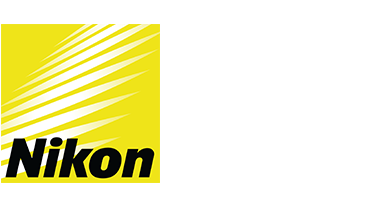
- Nikon’s Winter Sales Event is an annual program to drive awareness and engagement for prospects interested in camera equipment for holiday season gift giving.
- They leveraged a social targeted programmatic advertising campaign for Canada, acquiring audiences based on keywords in social posts, as well as people who talk about competitors or follow the accounts of competitors.
- Driving prospects to a Nikon Winter Sale e-commerce site, they achieved a 1.53% click-through rate (CTR) which was as much as 6.5x the response rate of their traditional programmatic ads.

- This worldwide leader in Workforce Management solutions recognized traditional email channels were losing momentum.
- They leveraged a social targeted programmatic advertising campaign for Canada and the results were dramatic – an exceptional 1.63% click-through rate yielding tens of thousands of website visits.
- Over 1 year, website traffic increased 11%, inbound call traffic increased 200%, and the company’s marketing influence pipeline increased 60%.
Let’s talk about how we can customize a Social Targeted Programmatic advertising campaign to achieve your objectives.
Where Have 30 Years Gone?
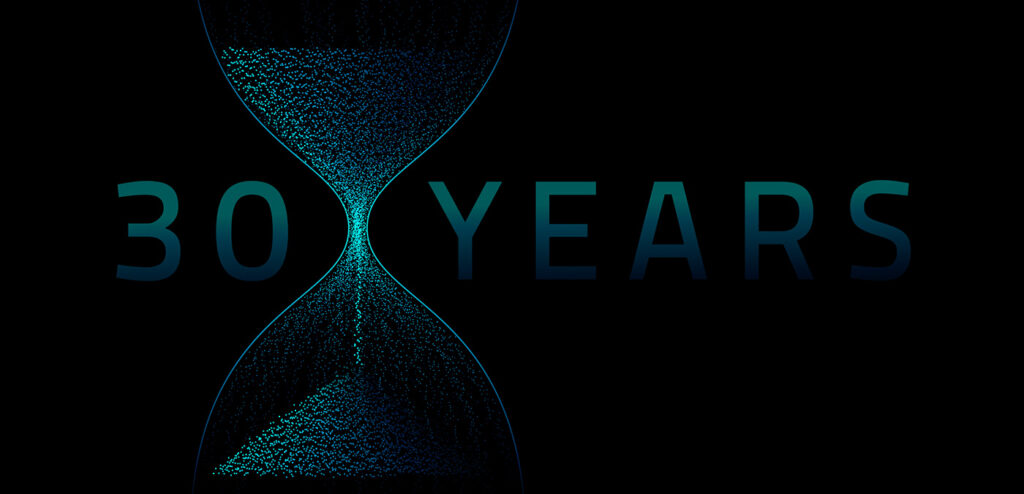
In 2021 StrategicAmpersand hit an astonishing (to me and my partner Miles Pollock) milestone. We celebrated 30 years in business. And not just in business, but in business together, as business partners. And yes, we still really like and respect each other! And no, we’ve never been a couple.
There were many discussions about how, or even if we would mark this momentous event, whether to celebrate or not, create noise and fanfare, pat ourselves on the back, take out thank you ads, produce a video, throw a virtual party (ugh, no), send out swag, do a blog series, throw a medallion on our website and collateral, or just quietly keep on keeping on. We sort of slipped into 2022 before ever making a decision, too busy with client work and honouring our tradition of being the shoemaker’s children, believing our reputation, amazing team and loyal clients that have kept the door open all these years and for whom we are eternally grateful and perennially appreciative, were enough.
PR In Canada recently asked us some questions for the Agencies Anniversary series and it got me thinking about the past 30 years, as well as what the future may hold. And at our age, we do think a lot about the future, while trying to remember what we did yesterday.
We are so grateful for the amazing clients we’ve worked with over the years, without whom, we wouldn’t be here at all. Companies, who often when we started working together were small, scrappy and agile, and we became extensions of their organizations. Clients like Cisco who we worked with for 26 years (!) Nikon Canada Inc. (17), Sony Electronics (17), Novell (14), Dell EMC (12), VMware (12), CDW Canada (12), Oracle (11), McAfee (10) and so very many others like Aptum, BlackBerry, Celestica, Commvault, Cradlepoint, Gartner, Kronos, Lenovo, OpenTable, OpenText, Procore Technologies, Sharp, Schneider Electric, SurveyMonkey, now Momentive.ai, SUSE, Trilliant, Waze, what3words to name only a fraction of our clients past and present.
These are tenures unheard of in the tech industry and we’re understandably very proud! We’ve had the great privilege of working with the best of the best, from the upstarts, to the kingpins, tech giants and leaders who built our industry and changed all our lives. Only space prohibits me from naming the hundreds of amazing individuals who took a shot and relied on us to be their integrated marketing and public relations partners. You know who you are.
Most importantly, Miles and I wish to thank the hundreds of wonderful people, far too many to name, current and past, who have been on our team, whether as an intern just starting out, or a lifer at 27+ years, like our amazing Art Director Illya, who initially said he’d never work anywhere full time, or our VP PR Anita who, after 23 years truly treats our company as if it’s her own, to Elena our CFO who stepped into Janice’s post-retirement shoes after a 25 year tenure and reengineered our processes, to Carol who keeps the wheels on the bus day in and day out and Lisa, our Head of Client Service who just celebrated her 20th anniversary with us, who possesses the patience of a saint, to teammates Cindy and Steve who give it their best every day, with enthusiasm and dedication, as well as the myriad others, many of whom we keep in touch with and have watched flourish in their personal and professional lives! You’ve all helped to make us great and sustain 30 years in this crazy industry.
Ours is a very crowded industry with new agencies and consultants entering the fray, seemingly almost weekly. You inspire us and keep us on our toes, motivate us to expand and innovate and sometimes school us in new ways of looking at what we do day in and day out. We have you to thank too.
And finally I would be remiss if I didn’t laud the very best business partner anyone could ever ask for – Miles Pollock Co-Founder, Creative Director, Best Marketing Writer in the Industry, Voice-of-Reason, Calm-in-the-Storm, Always-There Great Guy. In 30 years we’ve only had two disagreements. You’re definitely the yin to my yang in every way. Thank you is simply inadequate, but thank you. You know how I feel.
I can’t honestly say, “Here’s to the next 30 years”, because that’s not realistic. But I can say CONGRATULATIONS to us and thank you to everyone who got us here.
How to Get a Job at a Marcom Agency
By Gayle Robin, President, StrategicAmpersand
Every time we place job opening ads on our website, LinkedIn and other related sites we are amazed how many applicants possess very few of the required qualifications. We understand times are tough, especially for recent university grads. It’s hard to catch a break. And sometimes we do interview people who may not have the credentials but their application has caught our eye.

Here are some tips on how to get a job at a marcom, PR or advertising agency:
Applying for the Job
Include a Cover Letter
If we request a covering letter it’s because we want to validate that you follow direction. We want to see how you compose your thoughts and describe yourself and why you feel you should be considered for the job.
Show some resourcefulness. Find out who the hiring manager is. If we ask for a salary range, please provide it and be honest. We know everyone wants to improve their position and increase their income but we want to understand where you fit in the industry, as agency and corporate titles are often misleading and vary from company to company. A good rule of thumb is to provide a range that starts at 10%-15% more than you’re currently earning to what your realistic top end salary would be, given your years of experience.
If you really don’t possess any of the required qualifications then don’t apply for the posted job but enquire about other positions by including a cover letter highlighting your achievements and skills.
Your Resume
We don’t care about the format of your resume but please be sure it’s easy to read and provides all the usual information, including your skills, responsibilities and very importantly, results and achievements. Your resume should not exceed two pages. If you have relevant agency experience, indicate the clients you have worked on. Typos in your resume or missing chunks of time are immediate red flags for us.
The Interview
Do Your Homework
We often receive hundreds of responses, some from highly-qualified candidates. Surprisingly, candidates are often unprepared for an interview. One of the things we look for is people who demonstrate they want to work at our company. We ask questions to see what you know about us, our clients, the work we do, our awards, recent accomplishments and wins, et cetera. If you don’t know about us, why would we believe you want to work here?
It’s okay to ask a few questions before the interview such as:
- Who will I be meeting with? What is their title? Is this the person the position reports to?
- Are you able to share what clients the person in this position would be working on so I may do some preparation before the interview?
- Any other questions you think might help you prepare to beat out your competition and make a lasting impression.
It’s not okay to ask what the salary is, what the benefits are, or how much vacation time you’ll get before we’ve even met.
Finally, we look at your social media presence and persona and we also look to see if you follow us on Twitter or have looked up any of us on LinkedIn.
If we’ve shared who the client is that you may be working on, we will ask you lots of questions to see how much research and analysis you have done about their business as a gauge of your interest in the client, the type of work you’d be doing and to assess your resourcefulness. If we haven’t told you who the client is, then be sure to do some homework to see if we’ve announced any recent wins and at the very least know who our current clients are and be able to speak intelligently about recent work we have done for them. Know what products and services they market and sell and be able to name their key executives.
The Obvious
It may seem obvious, but be on time, or ideally a little early for the interview, even if it’s a Zoom call and take a few deep breaths. Dress appropriately (at least from the waist up). Have or offer samples of your work – only what’s in the public domain. Bring a list of questions you’d like answered if you’re given the opportunity. Have a notepad and a pen.
Don’t Bend the Truth
We know everyone wants to sell themselves and appear competent and skilled. However, we’ve interviewed hundreds of candidates over the years and can tell when you’re exaggerating about your credentials or accomplishments, or stretching the truth. Integrity is in our top three requirements when we assess a candidate. Be honest!
Know Your Weaknesses and Address Them
You’re a bright person. You know where your weaknesses lie and where the holes are in your resume. We’re going to ask you about them (why do you move around so much? Why have you been in the same position for 5 years without a promotion?). Please don’t say it was a lay off if you’re the only one who was let go. Be up front with us.
Be Yourself
Relax. We’re not out to trap you. We want to get to know you. Everyone wants to be liked. You’re probably a very nice person. Show us who you are beyond what’s on the resume. Let your guard down. Engage in conversation. Don’t tell us what you think we want to hear. It won’t serve either of us any good in the end. We have to be a fit for each other. We will ask you some personal, seemingly unrelated questions (though entirely legal!) to try to get to know you a bit. Go with the flow. Be real!
Provide Examples
We will never ask you questions that can be answered with a simple “yes” or “no”. We want to understand how you think, problem solve, listen and assess a situation. Wherever possible, it’s very helpful if you can provide examples as an illustration of a skill or in answer to a particular question.
The Follow Up
Send a Thank You Email
Always send a thank you email on the same day as the interview. Often after an interview, candidates think of something they wish they’d said or had been asked. The thank you email is the perfect vehicle to add a few words. It’s also a good opportunity to inject some thoughts about something you heard or were asked but perhaps didn’t feel you fully answered, and demonstrates your listening skills and enthusiasm.
References
You’ve been through all the interviews and we still like each other and want to proceed together. We’re going to ask you for references. We want to talk to your most recent supervisor. If you’re currently employed and your employer doesn’t know you’re considering a move, then we’d like to speak to the last supervisor or manager you had prior to your previous employer. We might want to talk to a client you’ve done work for. We don’t want to speak to a friend, co-worker, HR or your boss from 10 years ago.
You should also know that we do some digging of our own. And if you’ve been in the industry awhile, we may discreetly check you out with our contacts, colleagues and on social media.
We hope you found this information helpful as you seek out new career opportunities. If you think you’d be a fit with our organization, feel free to send us your resume with a cover letter and let’s see if there is a match.
How the StratAmp Team has Made Remote Working Work
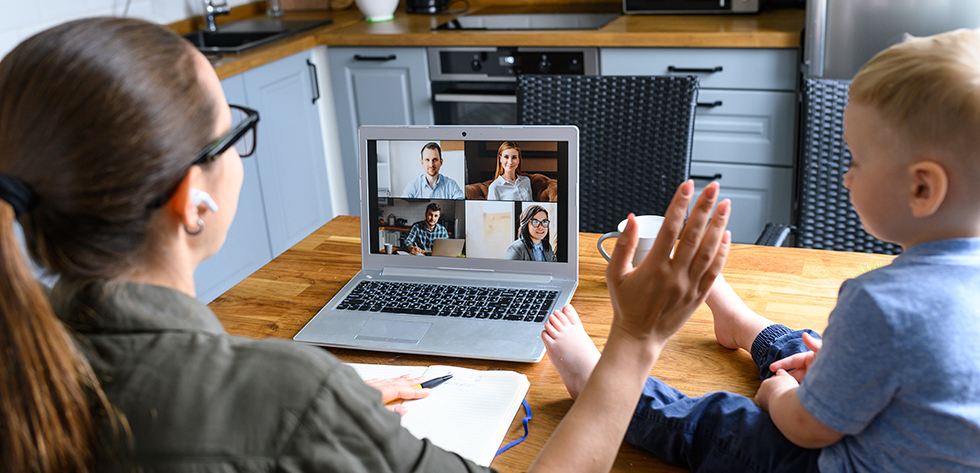
Like many companies, StratAmp has been working from home since March, thrust into a remote work reality we were surprised by, but not unprepared for. Most of the team was already working from home a few days a week, using tools such as Zoom, Slack, Dropbox, Google Docs and Micro Focus Filr to stay connected and productive.
This made the WFH transition easy in some ways, but the impact of the pandemic touches both our work and personal lives. We asked team members to share how they feel about the overall experience. The results serve as a snapshot of how StratAmp has adapted, and suggests how our work might evolve as the new normal becomes clearer.
The biggest challenge of working from home identified by the team was internet connectivity (45%), followed closely by social isolation (36%) and general anxiety about the impact of COVID-19 on our lives (36%).
But what about the social aspects of working in the office? Anecdotally, we’ve found speaking on video calls helps us retain some of the social interaction, even if it can’t replace it. And we’re chatting on video more than ever. In fact, the survey showed we communicate with each other on video calls more than any other method except email and Slack. When communicating with clients, video calls even edge out phone calls. A key transformative statistic is that most of us (73%) are now more comfortable chatting on video than we were before the pandemic.
When asked about returning to the office, given appropriate safety precautions are in place, 54% of us said we’d feel somewhat uncomfortable doing so. The team shared many concerns: getting exposed to Covid-19 while there (82%), getting exposed while travelling to work (63%), and potentially spreading the virus to co-workers (73%).
While only 18% said they’re concerned about organizing childcare when we return to the office, these anonymous results likely represent the concerns of all the members of our team with school-age children.
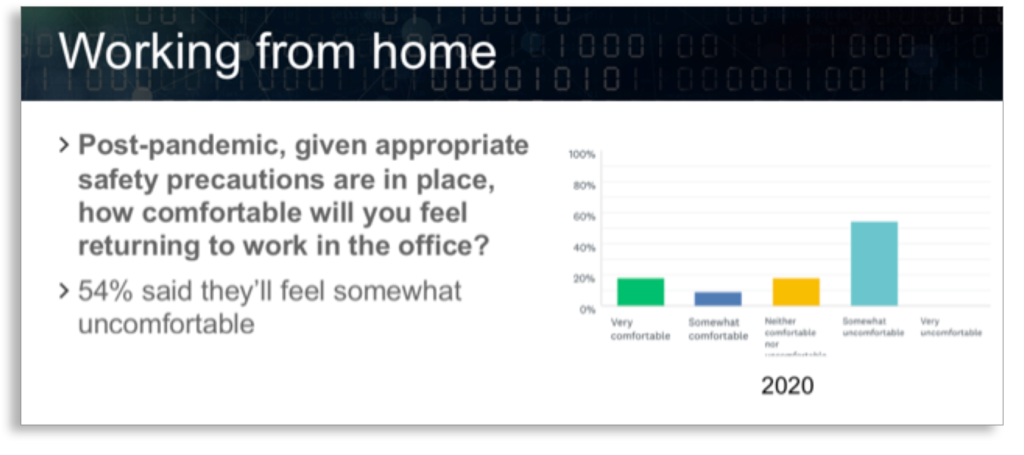
These apprehensions might help us understand how the team answered this next question: “Thinking about your current work from home arrangements, how long is this something you could comfortably maintain?”
No one said it’s unsustainable now, or that they could maintain this for just another week or another month. Interestingly, everyone in the company gave the same response: “As long as necessary.”
Of course, it’s more complex than simply being willing to work remotely indefinitely. There are many reasons the team might feel this way, including the concerns expressed about returning to the office.
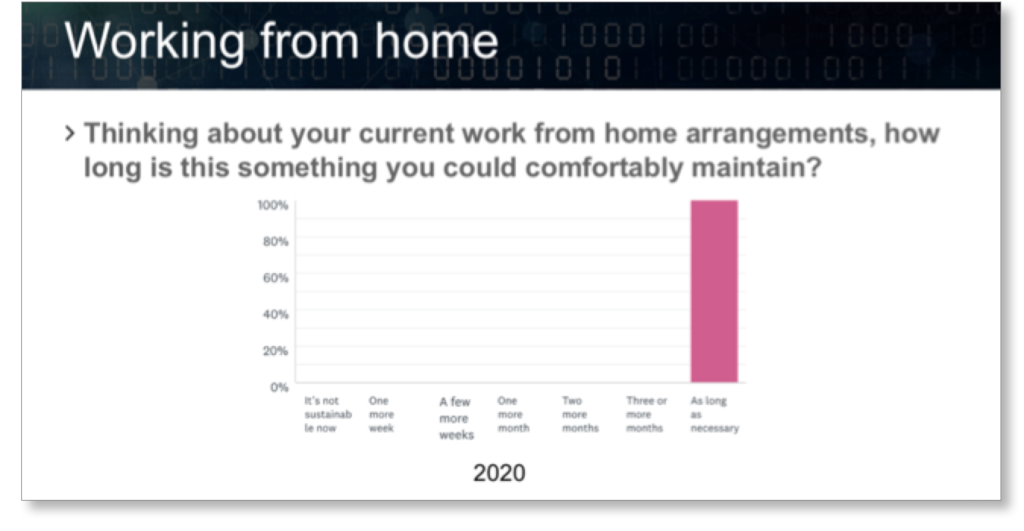
A key part of the picture is that the nature of our work simply allows us to work from home effectively. Many others don’t have that luxury. We’re privileged to be able to work from our homes, and recognize this comes with a responsibility to do so productively, while we also recognize our shared responsibility to observe health and safety guidelines to keep one another safe.
Programmatic Advertising Changes the Landscape for Marketing Success
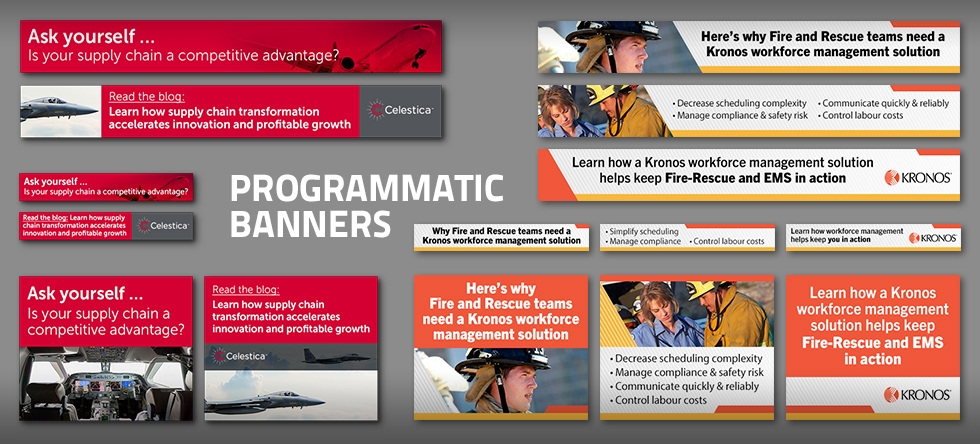
The challenge of any marketer is to identify and reach their audiences as cost-effectively as possible, and influence maximum response. The proliferation of mobile devices has led to an evolution in the rules of engagement for marketers. For example, today, we can reach amazingly closely-targeted audiences anytime, anywhere, deliver a range of creative messages, measure response in many ways, and manage the whole process in real-time.
‘Programmatic’ advertising is an all-encompassing term for the automated form of online display advertising that makes this all possible. It’s particularly effective for:
- Reaching closely-defined audiences
- Establishing presence and awareness among audiences
- Engaging audiences to respond to offers by clicking on the ads
- Targeting audiences based on their location (e.g. in an office building or attending an event)
- Varying messages to appeal to diverse audience segments
- Building frequency by re-targeting people who have received, or clicked on an ad
The most basic and easily achieved objective of programmatic advertising is, quite simply, audience engagement. It is particularly effective in generating broad yet targeted reach to support strategies like establishing presence and awareness. It also facilitates lead generation with its ability to identify and attract closely-targeted audiences and engage them with valuable content.
The programmatic platform is compelling in that it offers so many innovative ways to deliver advertising messages, and serves as the lynchpin of highly-effective content marketing strategies. Content is often the star of the show, in the form of blogs post, videos, whitepapers and much more. Programmatic ads deliver messages enticing viewers to click to a website where the content is available to read or download. Plus, the technology enables re-targeting of those viewers to enhance engagement, and real-time measurement and optimization tactics ensure budgets are maximized for best results.
StrategicAmpersand is a strong proponent of programmatic advertising for one very simple reason – it works! But our clients are the best advocates for this form of ‘smart’ advertising.
Celestica engages with attendees at global trade shows
Celestica, a world leader in high-reliability design, manufacturing and supply chain solutions, uses location-based programmatic advertising to geo-target prospects while they are attending industry trade shows around the world. This exceptionally cost-effective advertising tactic also enables us to re-target the devices attendees used at the shows for ongoing nurturing. Targeting vertical markets like Aerospace & Defense and Smart Energy, the messaging and offers drove prospects to thought leadership content on the company’s website. When an event is over, we optimize ads according to response – non-responders are re-targeted to increase advertising frequency, and those who responded with a click are re-targeted with alternative messaging, all aimed at maximizing engagement. Real time measurement and optimization enables Celestica to split-test creative messages to maximize impact and engagement.
Kronos builds engagement and actionable leads
Kronos, a leading global provider of HR management solutions, sees a consistent rise in both website traffic and actionable leads directly attributed to programmatic advertising. The campaign started with a test of location-based campaigns, but Kronos has expanded their use of programmatic to include an ‘always on’ strategy, which runs concurrent to location-based efforts. The always-on campaign identifies audiences according to traditional criteria (industry, job function, company size, etc.), and contextually through keywords, so display ads appear next to relevant content on diverse yet relevant websites. While Celestica’s priority was presence and awareness, Kronos was interested in generating leads and, as such, was able to test response to gated vs. non-gated landing pages with great results.
Programmatic advertising doesn’t require a big investment to generate engagement, and the transparency it affords allows for easy fine-tuning of variables such as budget, creative and calls-to-action for optimum results.Partnering for PR Success
Find out how Programmatic can support your marketing objectives.
Email: gayle@stratamp.com.

